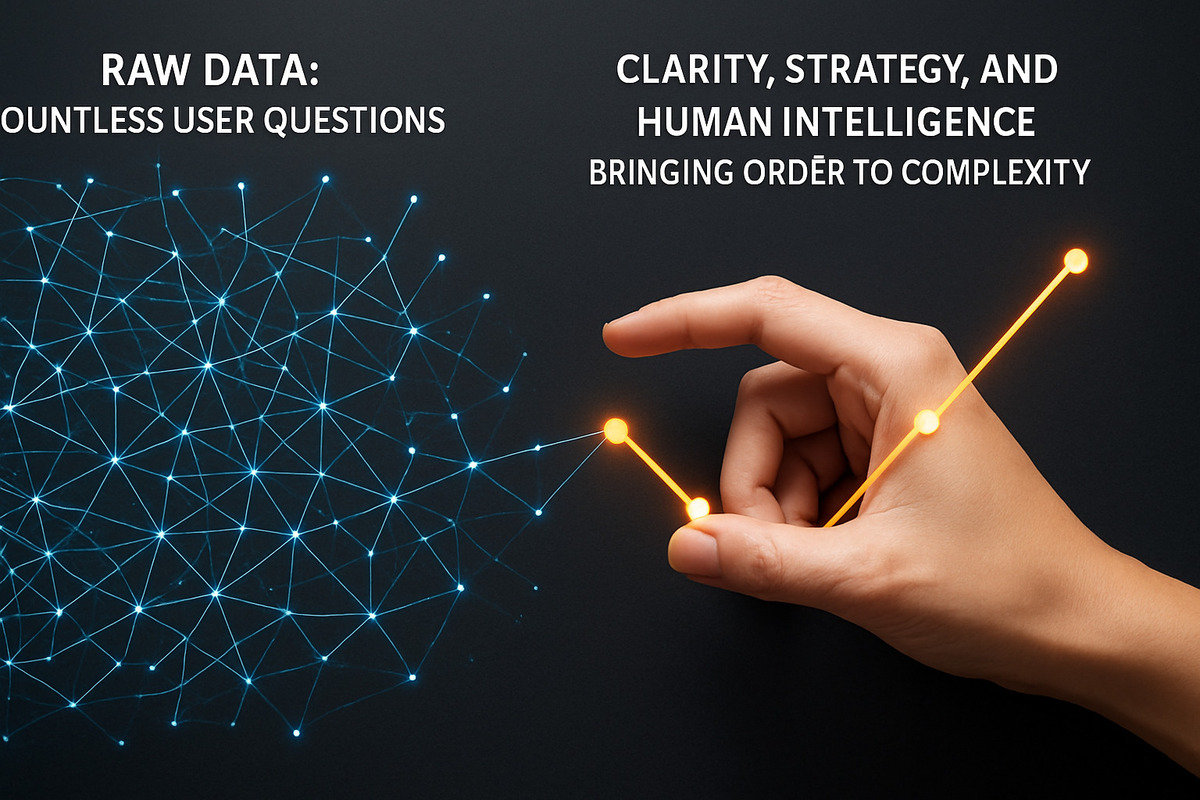Summary: This article moves beyond basic data scraping for ‘People Also Ask’ (PAA). It provides a strategic framework for experienced SEO professionals to leverage PAA by understanding user intent, building topical authority, and measuring true business impact. The core argument is that human expertise, not AI alone, is the critical element for turning PAA boxes into a sustainable source of organic growth.
Beyond the Scraper: A Strategic Guide to People Also Ask SEO
Are you treating Google’s ‘People Also Ask’ section as a content checklist? If so, you’re leaving traffic, authority, and conversions on the table. Many SEOs see PAA as a simple question-and-answer game, but this tactical view misses the strategic goldmine. True mastery of People Also Ask SEO comes not from automating data collection, but from the uniquely human ability to decode intent, build narrative connections, and establish genuine authority.
While AI tools can generate endless lists of questions, they can’t replicate the strategic oversight needed to win. True success in dominating these SERP features comes from understanding user intent, crafting nuanced answers, and integrating PAA content into a broader, more ambitious SEO strategy. Let’s move past the basics and explore how to make PAA a cornerstone of your organic growth.
From Q&A to Authority: Building Content Hubs with PAA
The most common mistake in PAA optimization is creating isolated pages for every question. This approach is inefficient and fails to signal deep expertise to search engines. Instead, view PAA questions as the building blocks for comprehensive content hubs that establish your topical authority.
Think of a core topic, like “technical SEO audit.” PAA will reveal dozens of related queries: “what is included in a technical SEO audit?”, “how long does a technical SEO audit take?”, “is a technical SEO audit necessary?”. Instead of separate blog posts, these questions should become H2s or H3s within a single, definitive guide. This structure shows Google that you cover the topic from every angle, making your page the most satisfying result for a spectrum of related searches.
- Group related questions: Identify thematic clusters within your PAA research.
- Structure content logically: Use a primary PAA question for your H1 and related questions for subheadings.
- Internally link: Connect your hub page to other relevant content on your site to reinforce the topical cluster.
This method transforms your content from a scattered collection of answers into a cohesive library of knowledge, directly improving your chances of owning multiple SERP features for your main keywords.
Decoding Intent: Guiding Users Through the Funnel
Every question in a PAA box has an underlying intent. A user asking “what is PAA optimization?” is in a different stage of their journey than one asking “best tools for PAA research.” The first is informational; the second is investigational, bordering on transactional. Your answers must reflect this.
Analyzing the intent behind the query allows you to craft answers that not only satisfy the user’s immediate need but also guide them to the next logical step. For an informational query, your answer should be clear and direct, perhaps linking to a glossary definition. For a query with commercial intent, the answer can be more detailed, subtly introducing your service or product as a solution.
This requires a human understanding of the customer journey. AI can scrape the question, but it can’t grasp the subtle context of why the user is asking. By mapping PAA questions to funnel stages, you can create a content experience that nurtures users from awareness to conversion.
How Your People Also Ask SEO Strategy Signals Expertise to Google
Google aims to reward E-E-A-T (Experience, Expertise, Authoritativeness, and Trustworthiness). Systematically answering a wide range of questions related to your core topics is a powerful way to demonstrate your expertise. When your domain consistently provides clear, concise, and helpful answers that appear in PAA boxes, it sends strong signals to Google.
You are effectively telling the search engine that you are a reliable source of information for an entire topic. This goes beyond a single keyword. By comprehensively addressing the universe of questions around your niche, you build a reputation with both users and algorithms.
This is where consistency is key. Don’t just target a few high-volume questions. Develop a process to continually find and answer new and related queries. This ongoing effort solidifies your position as the go-to expert, making it more likely for Google to feature your content not just in PAA, but in other prominent SERP features as well.
The Human Edge: Why AI Scrapers Are Only the Starting Point
Let’s address the role of automation. AI-powered tools are incredibly efficient at scraping thousands of PAA questions and identifying potential opportunities. They save countless hours of manual research and are an essential part of the modern SEO toolkit. To ignore them would be foolish.
These tools, however, lack the human understanding of context, nuance, and brand voice necessary to create answers that truly connect with users. An AI can tell you what people are asking; it cannot tell you how your brand should answer. It cannot interpret the emotional driver behind a question or craft a response that builds a lasting connection.
Your competitive advantage lies in the layer of strategy you apply on top of the data. Use AI for discovery, but rely on human expertise for creation and implementation. This combination of machine efficiency and human intellect is what separates a basic PAA strategy from a dominant one.
Is your website’s technical foundation ready for this level of content strategy?
Before you build out extensive content hubs, you need to be certain your site is technically sound. A slow site, poor internal linking, or indexing issues can undermine even the best content. OnDigital’s comprehensive Technical SEO Audits provide the clarity you need to build your authority on a rock-solid foundation.
Measuring What Matters: Beyond Rankings and Snippets
Tracking your appearance in PAA boxes is a start, but it’s a vanity metric if it doesn’t translate to business results. A mature People Also Ask SEO strategy focuses on measuring the true impact on organic traffic, conversions, and overall brand visibility.
You need to move beyond simple rank tracking. Use your analytics to answer more important questions:
- What is the click-through rate? Are users who see your PAA answer actually clicking through to your site?
- What is the post-click engagement? Once they land on your page, do they stay? Do they consume more content?
- Does this traffic convert? Are users who arrive via a PAA snippet taking a desired action, like signing up for a newsletter or filling out a contact form?
By connecting your PAA efforts to these core business metrics, you can demonstrate the real value of your work. This level of analysis allows you to refine your approach, focusing on the questions and topics that drive not just visibility, but tangible growth for your London-based business or your clients.
Conclusion: Start Answering, Stop Chasing
The ‘People Also Ask’ box is more than a SERP feature; it’s a direct line to your audience’s needs. By treating it with the strategic respect it deserves, you can transform it from a minor tactic into a powerful engine for building authority and driving growth. The future of PAA optimization belongs to those who combine the efficiency of technology with the irreplaceable insight of human expertise.

